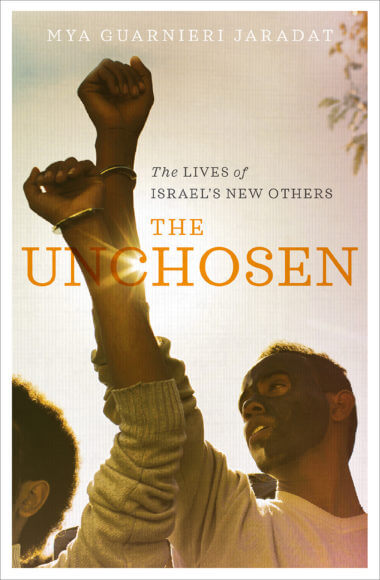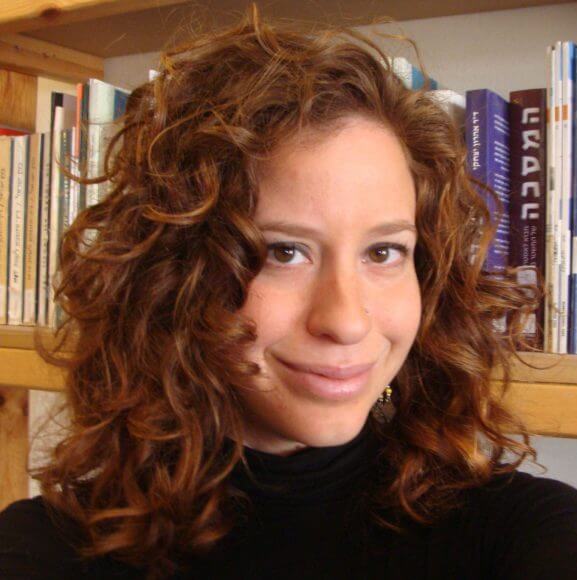The Unchosen: The Lives of Israel’s New Others
By Mya Guarnieri Jaradat
224 pp. Pluto Press/The University of Chicago Press Books. $23.
Southern Tel Aviv has long been the wealthy White City’s “backyard,” under serviced and neglected. It is the symbol of the Ashkenazi elite’s malign neglect of the country’s periphery, and thus is the perfect backdrop for Mya Guarnieri Jaradat’s careful, reflective and self-reflective book on guest-workers and refugees, “The Unchosen: the lives of Israel’s others.”
Jaradat does very effective economic journalism on the guest workers, showing how the silent violence of limited-stay visas lies behind Israeli employers’ ability to pay Southeast Asian guest workers wages well below those to which they had agreed.

But the story of guest worker exploitation is also a story about Palestine. Palestinians from the West Bank and the Gaza Strip were central to the labor force before Oslo, when they made up nearly half of Israel’s construction workers and 45 percent of its agricultural laborers. This was in some ways a vulnerability, for Palestinians mobilized not just around wages, but also around political–anti-colonial–demands.
The post-Oslo regime diminished the quantity of Palestinian laborers, emptying posts which foreign guest workers took. Israel can easily remove such imported foreign laborers from the territory if they get too active.
Jaradat’s work on refugees contrasts with tales retailed by an Israeli liberal-left eager to scapegoat anyone but themselves for local conditions. A common–and racist–story has been one about primarily poor and Mizrahi residents of the southern neighborhoods firebombing and pogrom-ing African refugees. Certainly such attacks happened. But as a compelling story of how the neighborhoods treated the refugees, it misses much.
For racism does not emerge spontaneously. It is a strategy of domination and control. Part of how the pattern of control is made to seem natural is by creating a map of the world in which all difference becomes permanent antagonism, thereby making invisible the most foundational antagonisms, such as those between who owns resources and who does not.
Demonstrations against asylum-seekers’ presence occurred amidst “the larger context of Ashkenazi hegemony, the pressures created by the state’s neoliberal policies, and the anger wrought by the long-standing neglect of the southern neighborhoods.” Such masked violence of market and state gathers fewer headlines than a narrative of racist Likud and SHAS-supporting Mizrahi raging against the presence of thousands of refugees in their neighborhoods.
Jaradat doesn’t just tell this larger story. She weaves in-and-out an interview with one of the most intriguing local organizers, Shula Keshet, who lived the area’s continued suffering under what many activists call Ashkenazi supremacy. Keshet says, “It’s not a miracle that the extreme right [takes advantage of the residents’] distress and that they can incite against the foreigner, the others.”
But Jaradat also draws on Keshet to criticize the “Ashkenazi human rights” activists from wealthier and white northern Tel Aviv who came “waving the flag of human rights,” who “think it’s very natural that [African asylum seekers] should be here [in south Tel Aviv] and the veteran Mizrachi residents should shut their mouths and not say anything. And if they say anything, then they’re depicted as racists.”
Jaradat juxtaposes the folk racism of some of the neighborhoods’ poor with racism-as-consequence. She shows that racism is also a question of which populations bear the brunt of neoliberal adjustment, which neighborhoods receive populations they lack the infrastructure to absorb, which neighborhoods receive an urban infrastructure they neither want nor need. She also raises another way differences in power work amongst Jews: refugees’ struggles receive Ashkenazi sympathy that Mizrahi struggles do not.
She reports a protest she attended in 2011 against home evictions in Kfar Shalem: “But, other than myself, there was not one member of the media present. Nor were there any left-wing activists.” One resident remarked, “It’s a pity that we’re not foreign workers.” Jaradat’s journalism is compelling, but I would have liked to hear more about the Mizrahi residents’ perceptions of solidarity and the lack of it.
Many of the “mainstream” rallies defending the refugees were couched in the familiar colonial rhetoric of Israeli nationalism, or Zionism. Some rallies’ organizers acknowledged that the “inclusion” for which they were advocating rested on exclusion. But to note the foundational exclusion–colonialism–was, always, to raise “politics,” or code for Palestine, which would supposedly destroy the refugees’ public support.
Jaradat is strong on how certain Israeli organizers made such decisions. She is weaker on how refugees, some of whom, like the Sudanese, share a common language with Palestinians, and who organized many of the most stunning demonstrations, including marches through the desert, saw or see the colonial cleavage.
Slogans like “Let us work to survive,” “Refugees’ rights now!” and “Walk for freedom and humanity,” were pitched to petition a certain regime of international law, one that whatever its issues, is far from friendly to Israeli apartheid. But slogans calling on Israel to adhere to its contradictory “values…as a Jewish and democratic state” were more parochial.
The Palestinian case runs through the book in a more complex, but constant, way. Jaradat does not offer a chronicle of Israeli anti-refugee racism to deflect from colonialism. She is scathing when she wonders, after a mob beats an Eritrean asylum seeker to death, “how can anyone be surprised?”– after the Nakba, the occupation, and shoot-to-kill orders against Palestinians. Her sympathies and commitments are clear and unquestionable. But when reading the book, I wanted to know more, not about how Jaradat herself or human rights workers view the Palestinian cause and the protests, but how those most afflicted view them.
To that end, I wondered if Jaradat could have used her clear rapport and trust with Keshet to ask what it might mean for other residents of South Tel Aviv to look back nostalgically on it as a “gan,” a garden, knowing what it was built upon? How does the Ethiopian Jewish population, cannon fodder for the colonial apparatus, see these protests? And where, most crucially, is the perspective of the ’48 Palestinians–their orientation to both the refugees and the strategically located guest-workers?
In her reporting, Jaradat has shown clinically how the social structure produces racism with such mechanical regularity. She shows a picture of Israeli society which not merely exposes its brutal racism and colonialism, but also how racism and power function within the dominant Jewish sector. In so doing she undermines an important myth of the Ashkenazi elite, which is that the racism which courses through Israel is somehow not the fruit of colonialism, but is primarily the fault of Russians, Mizrahi, or others–tainting what had been untainted. This is important work, and where The Unchosen makes its most important contribution.



“White City” is Selma, Alabama circa
19601940!The name says it all; at least, there is some honesty in that.
P.S. Wasif Jawhariyyeh – https://www.facebook.com/photo.php?fbid=10213220684968330&set=a.1610534499897.86765.1132268443&type=3&theater
“Politics” can be code for Palestine in Canada, too.
There’s an annual “Walk with Israel” in Toronto. A group of us has had a presence along the line of the walk for years. Most of the Zionists abuse us (when we’re close enough to hear them). The JDL threaten us. But my favourite response was the woman who said, “This is just a march. Why are you bringing politics into it?”
Lest anyone be misled by Mya or JLewisDickinson, ‘The White City’ refers to Tel Aviv’s unique Bauhaus architecture.
http://telavivbauhauswalk.com/index.php/the-walk